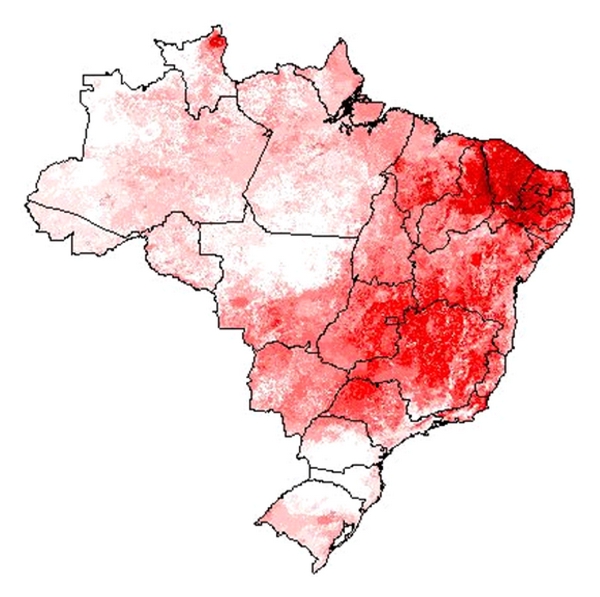Chugs disease is caused by Trypanosome cruzi parasite which is primarily transmitted through kissing bugs (triatomines). While control measures have been implemented to help control the domestic vector population in Brazil and have shown to be effective in reducing disease occurrence, there are still reported cases of the disease transmitted from the native vectors. These occurrences can be there result of sylvatic vectors invading households, contamination of food, or domestic/peridomestic vectors. The authors investigate the distribution of 62 Brazilian species of the vectors.
MaxEnt was used to model the distributions. Occurrence data for the species was collected from multiple sources including Brazilian State Health Departments. Environmental data was used from two datasets: multitemporal remotely sensed imagery (Advanced Very High Resolution Radiometer satellite) and climatic variables (WorldClim). Of the species modeled, P. geniculatus and P. megistus had the largest/broadest distribution.

Species diversity map, darker red regions have higher predicted cooccurring species.
The most favored regions for the vectors are the Cerrado and Caatinga, the diagonal open areas in eastern South America. The results also highlight the nowhere in Brazil is Chagas risk small but some regions are of higher risk than others. Also, the current distribution of T. infestans (the domestic vector) shows the impact and effectiveness of the control measures.
Gurgel-Gonçalves, R., Galvao, C., Costa, J. & Peterson, A. T. 2012 Geographic distribution of Chagas disease vectors in Brazil based on ecological niche modeling. J. Trop. Med. 2012.

